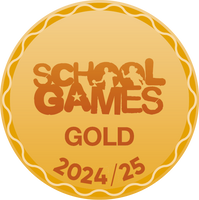Geography
Intent
We aim to inspire pupils to become curious and explorative thinkers with a diverse knowledge of the world; in other words, to think like a geographer. We want pupils to develop the confidence to question and observe places, measure and record necessary data in various ways, and analyse and present their findings.
We aim to build an awareness of how Geography shapes our lives at multiple scales and over time. We hope to encourage pupils to become resourceful, active citizens who will have the skills to contribute to and improve the world around them.
NBP encourages:
• A strong focus on developing both geographical skills and knowledge.
• Critical thinking, with the ability to ask perceptive questions and explain and analyse evidence.
• The development of fieldwork skills across each year group.
• A deep interest and knowledge of pupils’ locality and how it differs from other areas of the world.
• A growing understanding of geographical concepts, terms and vocabulary.
Kapow Primary’s Geography scheme of work enables pupils to meet the end of key stage attainment targets in the National curriculum. The aims also align with those in the National curriculum. For EYFS, the activities allow pupils to work towards the ‘Understanding the world’ Development matters statements and Early learning goals, while also covering foundational knowledge that will support them in their further geography learning in Key stage 1.
In Geography, where possible we try to get the children outdoors to experience the local area and to take part in practical investigations. Geography should inspire in pupils a curiosity and fascination about the world and its people that will remain with them for the rest of their lives. Throughout school children will investigate a wide range of geography topics.
A summary of Intent
- To encourage curiosity about the world
- To create memorable learning experiences which capture children’s passion for the subject
- Deepen children’s understanding of the interaction between physical and human processes, and of the formation and use of landscapes and environments.
- To develop competency when using geographic skills.
- To improve locational awareness
Implementation
Producing creative/active lessons
Use of Kapow scheme of Work.
Collaborative planning to maximise ideas and knowledge base.
Children challenged through questions, discussion and debates about human, physical and locational geography.
Children given ‘Real life’ snippets of the world through being emerged in a geography topic.
Flexible and adaptable planning to ensure in depth understanding of key elements of geography.
Children provided with local comparisons and an awareness of locality.
The two EYFS units provide a solid foundation of geographical skills, knowledge and enquiry for children to transition successfully onto Key stage 1 Geography learning, whilst also working towards the Development matters statements and Early Learning Goals. These units consist of a mixture of adult-led and child-initiated activities which are selected by the teacher to fit in with Reception class themes or topics.
Impact
Children can experience the different parts of the world.
Children use passion and excitement to help them achieve their potential in Geography.
Children are motivated to discover more beyond the curriculum.
Children retain information (sticky knowledge) and can discuss, debate and challenge when discussing human and physical geography.
Children able to complete field work using geographical skills.
Develop a sense of location and place around the UK and some areas of the wider world using the eight-points of a compass, four and six-figure grid references, symbols and keys on maps, globes, atlases, aerial photographs and digital mapping.
Develop an appreciation for how humans are impacted by and have evolved around the physical geography surrounding them and how humans have had an impact on the environment, both
positive and negative.
Compare and contrast human and physical features to describe and understand similarities and differences between various places in the UK, Europe and the Americas.
Name, locate and understand where and why the physical elements of our world are located and how they interact, including processes over time relating to climate, biomes, natural disasters and
the water cycle.
Understand how humans use the land for economic and trading purposes, including how the distribution of natural resources has shaped this






